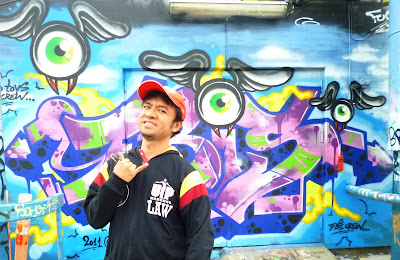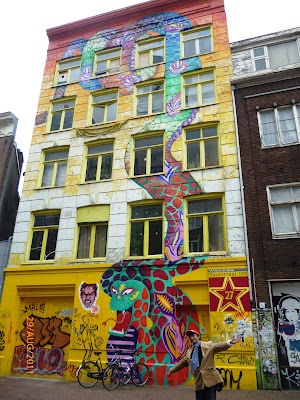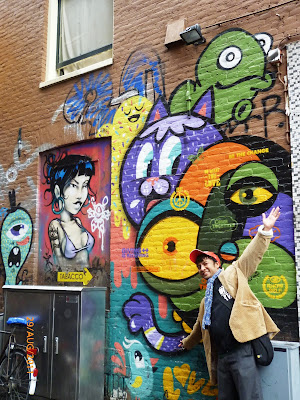Is graffiti art or is it a crime? Graffitis, big and colourful letters and pictures are the vibrant expressions of modern cities, which i saw during my recent trip to germany, denmark belgium, and netherlands. In modern times, paint, particularly spray paint, and marker pens have become the most commonly used graffiti materials. Graffiti may express underlying social and political messages and a whole genre of artistic expression But In most countries, marking or painting property without the property owner's consent is considered defacement and vandalism, which is a punishable crime.
Graffiti and graffito are from the Italian word graffiato ("scratched"). "Graffiti" is applied in art history to works of art produced by scratching a design into a surface. A related term is "graffito", or "sgrafitto," which involves scratching through one layer of pigment to reveal another beneath it. This technique was primarily used by potters who would glaze their wares and then scratch a design into it. In ancient times graffiti was carved on walls with a sharp object, although sometimes chalk or coal were used. The word originates from Greek γράφειν — graphein — meaning "to write."
In RECLAIMYOURCITY.NET, it noted that nowadays, urban public spaces are reserved for those who have enough money. Advertising dominates the urban landscape, and we are constantly bombarded with slogans from multinationals everywhere we go. Architecture and the streets are shaped by commercial interests, not by the residents of the city. It is impossible to avoid, the public have no access to these spaces, that is, unless we claim them for our own.
Graffiti and street art are the only ways that people can interact with public spaces actively. These art forms can, for example, express emotions, give critique on current politics or society, or offer venues for public art.
Therefore, they create a space for communication and discourse, where private experiences can be made visible, and where critical, personal or artistic messages can be passed onto others outside the artists' immediate circles. Graffiti makes the streets colourful, brings life into the greyness of everyday life and sterile architecture, showing signs of life of the people living behind the facades.
Graffiti is a democratic means of expression. Historically graffiti was, above all, a symbol of freedom. Freedom of speech and movement made it possible for graffiti all over Europe to starkly emphasize the tighter restrictions of society. Europe recognized the symbolism of the graffiti and in this sense, welcomed it. Graffiti often has a reputation as part of a subculture that rebels against authority, although the considerations of the practitioners often diverge and can relate to a wide range of attitudes. It can express a political practice and can form just one tool in an array of resistance techniques.
Indeed, graffitti is an art form and there are incredibly talented people who do their work with aerosol cans and public walls. Sometimes, graffiti has a way of stating something that just wouldn't be as appropriate any other way. But to others, the graffiti is not an attempt at art, but what appears to be late-night scribbles by disaffected individuals that wish to state publicly their discontent with politics, football, the environment, their personal lives, etc.
There is one school of thought that says that Graffiti done with permission is art in the eye of the beholder.However, it becomes a crime when you put that "art" on someone else's property - "your freedom of expression ends where my property begins." Graffiti , to them, is a gateway crime that both leads children and adolescents astray and sends a message that a graffiti-covered neighbourhood is ripe for criminal activity. Europe, paticularly in Britain, has a so-called Anti-Social Behavior Act of 2003 which was is similar to a piece of potential EU legislation with the aim to:"…eliminate dirt, litter, graffiti, animals' excrement and excessive noise from domestic and vehicular music systems in European cities, along with other concerns over urban life."






































No comments:
Post a Comment